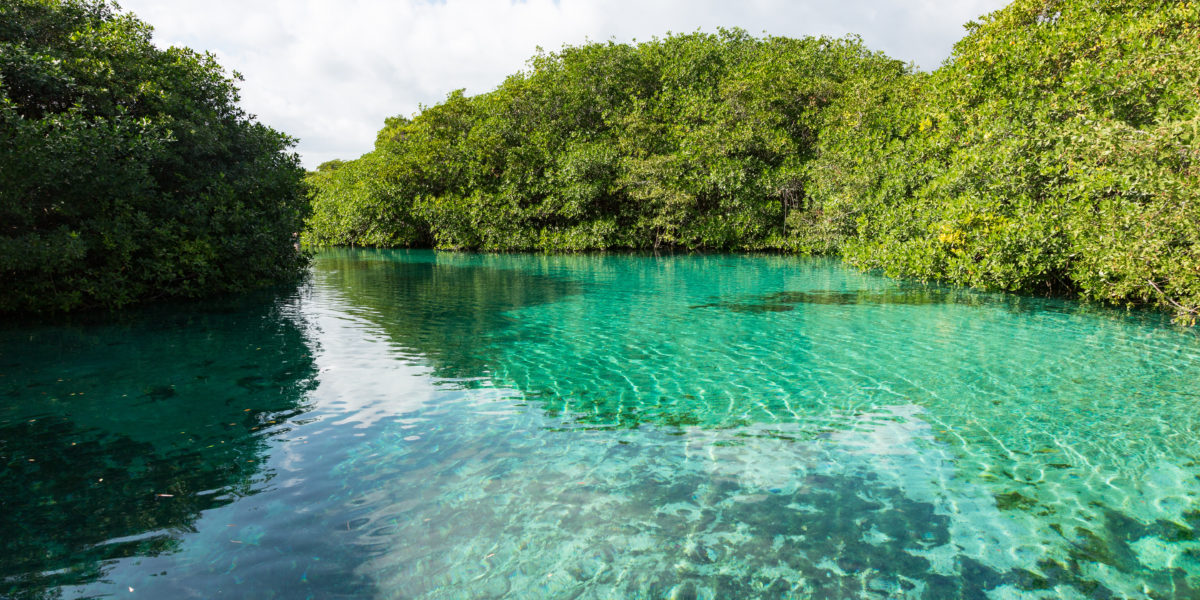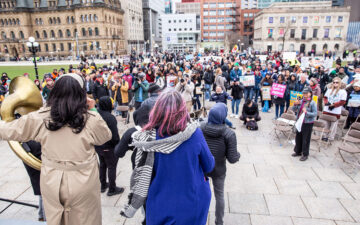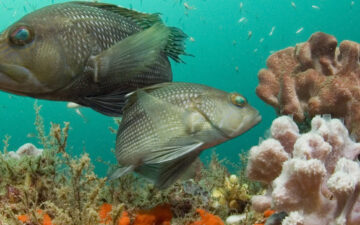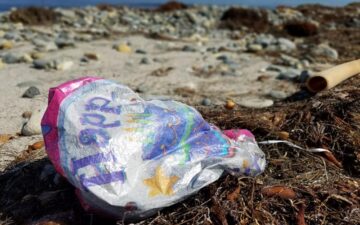During the 2022 United Nations Ocean Conference, The Ocean Foundation and Fundación Mexicana para el Océano A.C. presented a virtual side event on June 30, 2022 — highlighting case studies on reducing climate change impacts through restoration and Nature-based Solutions (NbS) in marine coastal ecosystems. You can view the recording of this virtual event here. Below is a summary of the discussion.
The event, titled “A Perspective to Reduce Climate Change Impacts Through Restoration and NbS in Marine-coastal Ecosystems, a Review of Case Studies,” discussed activities carried out to implement NbS from a regional and national perspective in Mexico. Discussed activities included the maintenance and restoration of mangrove ecosystems, learning about collecting consistent quantitative and qualitative data on the effectiveness of NbS, and sharing experiences of how mangroves, coral reefs, and seagrasses provide important ecosystem services for climate change adaptation and mitigation. The Ocean Foundation and Fundación Mexicana para el Oceáno AC partners UNEP Latin America and the Caribbean, Caribbean Environment Program, The Mexican Carbon Program, UNAM ENES, CINVESTAV, WRI Mexico, and the Mexican government, represented by Secretaría de Medio Ambiente y Recursos Naturales (SEMARNAT) and Instituto Nacional de Ecología y Cambio Climático (INECC), discussed the main challenges to implementing blue carbon ecosystem restoration as a nature-based solution proven to recover ecosystem services and associated livelihoods.
Key Issues discussed included:
- Mexican Government Leadership: An overview of the Mexican government’s tools to monitor Ecosystem-based Adaptation (EbA) and climate change vulnerability reduction with a focus on coastal EbA in the Gulf of Mexico, Tuxpan, and Celestún. Implementation of the Mexican government’s Nationally Determined Contributions (NDCs) were also presented. The “adaptation based on coastal ecosystems” project covered the lower basin of the municipality of Tuxpan, Veracruz, and Celestún, Yucatán. Through that project, successful activities in the country were mapped and a methodology was developed to build a blue carbon baseline. A guide was also developed with recommendations to scale up and replicate successful restoration initiatives in mangrove ecosystems. REPORT
- Regional Planning: The “Regional Strategy and Action Plan (RSAP) for the Valuation, Protection and/or Restoration of Key Marine Habitats in the Wider Caribbean Report.”
- Site Prioritization: A four-part scorecard (pg.40) that starts at the country level and narrows its focus down to specific large-scale habitat restoration sites. Through this process, a total of 19 scorecards for 16 countries were produced in the Wider Caribbean region. A total of 48 unique large-scale habitat restoration sites were identified through this process.
- Technical Capacity Building: A manual on the ecological restoration of mangroves in the Mesoamerican Reef System (MAR) and the Wider Caribbean. Based on the foundation of restoration ecology and ecological restoration principles of the Society for Ecological Restoration (SER), this manual contributes to strengthening local, national, and regional capacities for the ecological restoration of mangroves and the ecosystem services they provide in the MAR and the Wider Caribbean region by supporting the development of a strategy including proposals, planning, implementation, and follow-up of mangrove restoration programs. The manual can be used by government entities, civil organizations, the academic community, the business sector, members of civil society, indigenous peoples, and local communities. SER manuals can be found here: SPANISH ENGLISH
- Data Availability: Recognition that the lack of consistent quantitative and qualitative data on the effectiveness of NbS and the extent of its national implementation could be barriers to its implementation. The discussion shared critical and recent perspectives about the impacts of socio-ecological restoration as a NbS with large potential to be implemented in the coastal-marine areas of Mexico.
Key recommendations for action:
- Reiteration by the group of the consensus that mangroves are an important ecosystem to human well-being because they help stabilize the coastline and provide natural infrastructure and protection to nearby populated areas. Mangroves can help prevent erosion and absorb storm surge impacts during extreme weather events such as hurricanes.
- Mangroves in Mexico are exposed to economic and socially illogical destruction, so protection and conservation efforts from different sectors are needed now more than ever. The losses are such, and the opportunities sufficiently great, for mangrove restoration to be seen as a critical component of both conservation and coastal management.
- The list of high-priority sites that were scored in the report guides TOF’s focus as we work to develop replicable models for investment plans that utilize a blended finance approach to habitat restoration, conservation, and pollution prevention. By mapping the many beneficiaries of a single restoration project, including the private sector, social benefits, and the public, we can link (1) blended finance, (2) the economic valuation of ecosystem services, and (3) broader socio-economic and cultural benefits together for a more holistic restoration approach. This allows the integration of public, private, and philanthropic capital, not only to support the design and implementation of restoration projects, but also the long-term monitoring needed to measure success.
- As a regional community, Mexico recognizes the urgency of addressing climate change while promoting sustainable economic development. With this approach, collaborative efforts will help pave the way for strategic action expected to help the Wider Caribbean region rally private investors, non-profit organizations, and government actors to restore and protect coastal ecosystems, as well as reduce pollution stressors, that increase climate resilience. This will ultimately enable the promotion of sustainable blue economy approaches.







